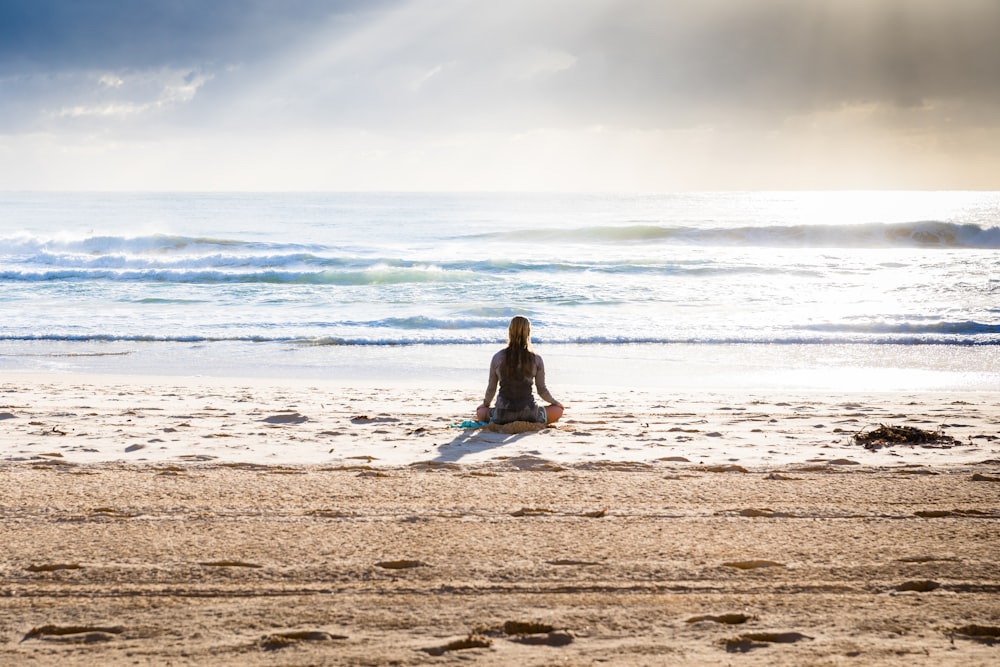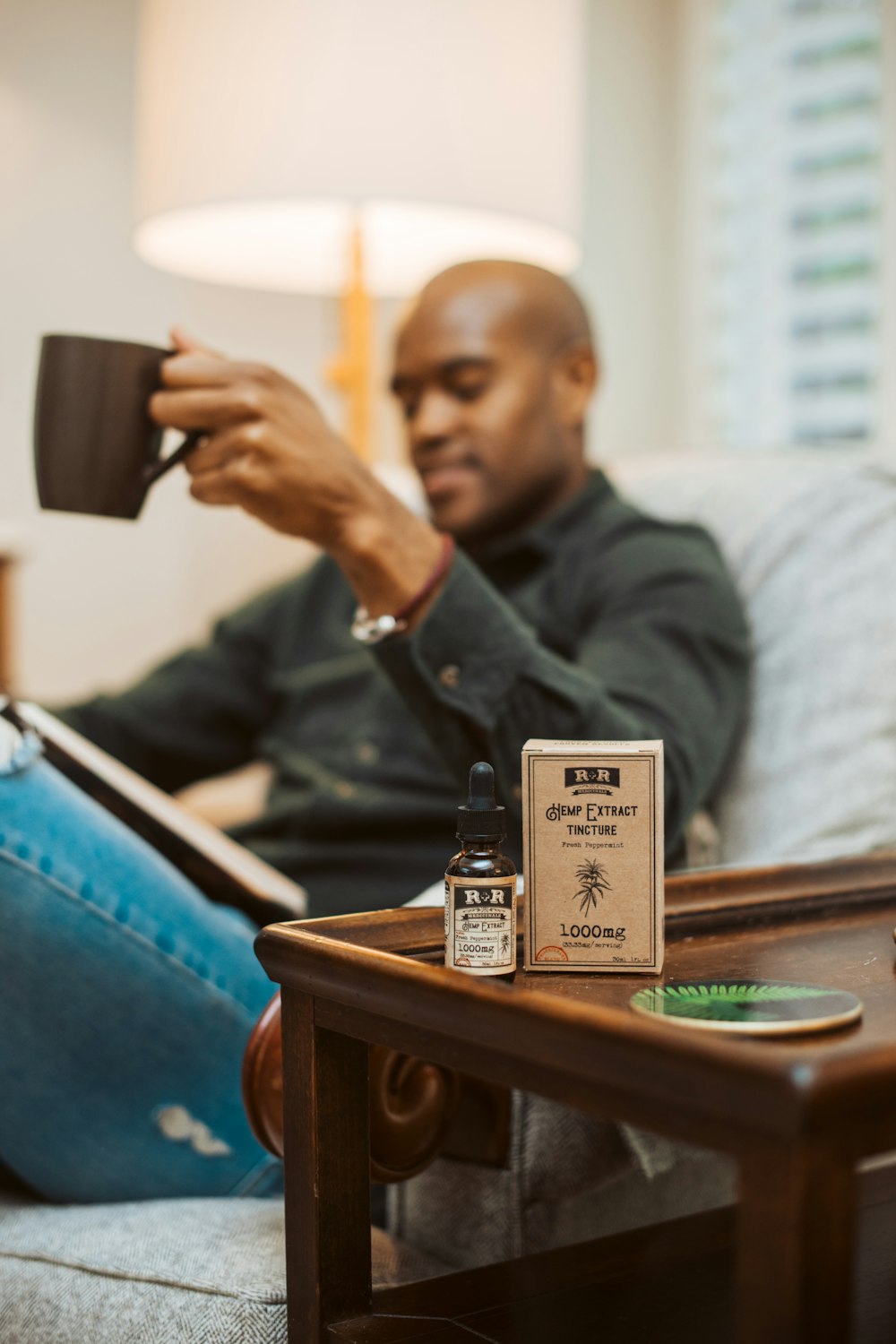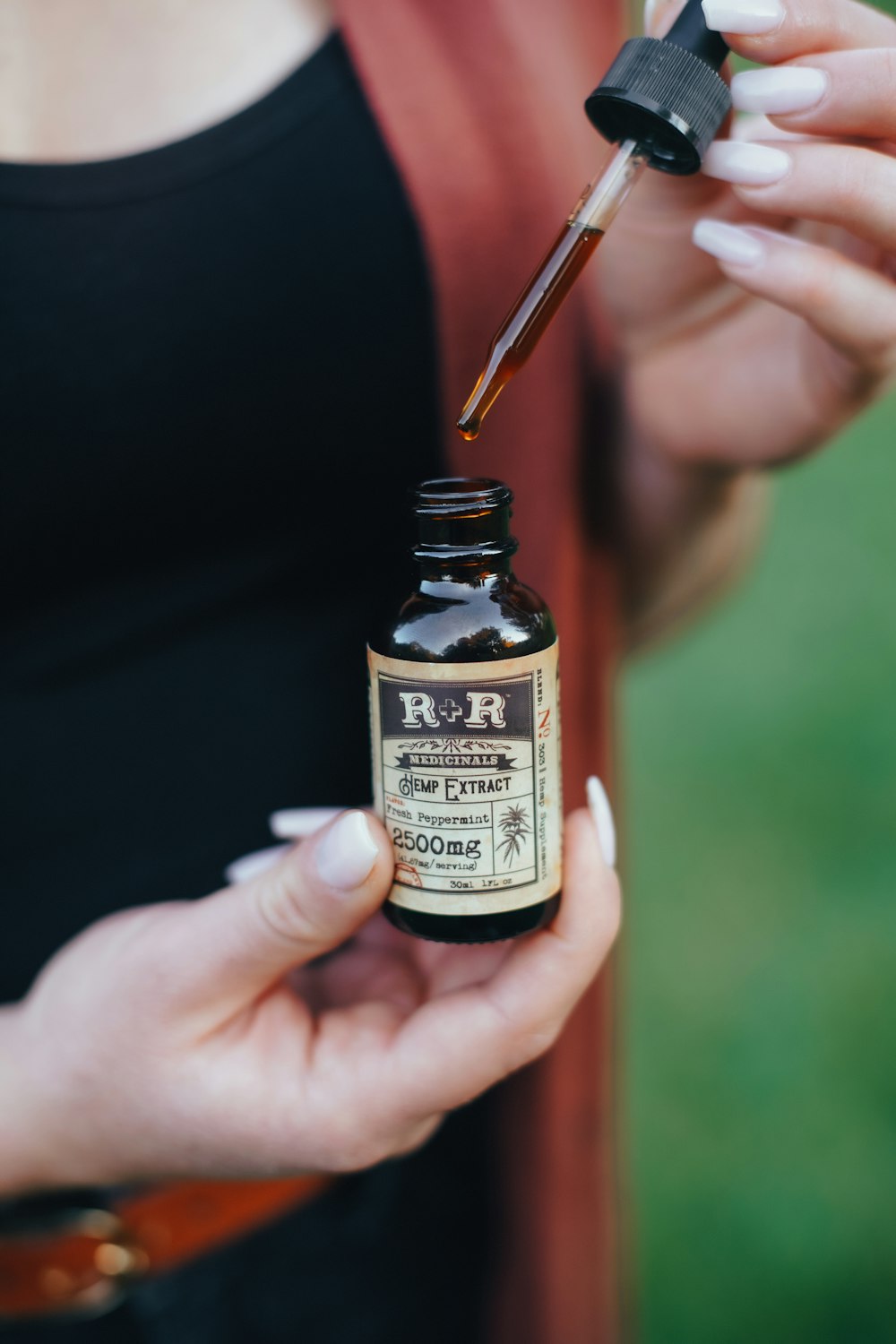Thriving in your 40's and Beyond

Once you hit 40, it’s all downhill, right? Wrong! Sure, for all us guys and gals in our 40’s (or older), we typically have to pay more attention to what we eat and how we move our bodies, lest we start packing on the pounds, especially around our bellies. But, aging doesn’t have to take the toll we’re traditionally told it does. Many of us look (and feel) better in our 40’s than we did in our 20’s. Remember the freshman fifteen—those days when unlimited fro-yo and frat party beers flowed freely? I know I didn’t look as healthy then as I do now, and that was over two decades ago for me. In my forties, I take much better care of myself than I ever have, because I know my body better now than before, and I’m not so driven by instant gratification and intoxication like those wild and crazy college days.
The truth is, we can thrive in our forties, fifties, sixties, seventies, and so forth. The second half of our lives need not be filled with restrictive diets and countless hours at the gym. With a few tips and tricks, and a true desire to be healthy well into our golden years, we can look and feel better now than we ever have before!
Eat Real Food
When it comes to diet, things can get downright confusing. What are we to eat, if we want to not only maintain good health, but truly thrive as we get older? With so many diet trends out there, it’s really hard to know what’s what. Paleo? Whole 30? Ketogenic? Mediterranean? What’s the difference between these healthy diet trends, and what are their similarities? One singular thing these diets all have in common is this—they focus on whole foods. You won’t see any processed foods touted in their recipe plans. Eating a food that comes from Mother Nature—whether plant, animal, or mineral—is the best rule of thumb when it comes to eating right.
But, with so many processed goods lining our supermarket shelves, how do you say no to processed and refined foods? One simple rule of thumb is to always shop the store’s perimeter. Stick to the produce section, the dairy section for eggs, and the deli for fresh fish and lean meats. Skip the inner aisles, lined with cereals, chips, crackers, etc. And there’s no need to buy cookies, muffins, or candies because these foods aren’t good for us—especially as we get older.
You’ll also want to cook as often as possible. Treat yourself to a beautiful whole foods cookbook that inspires you to create healthy recipes in the comfort of your own kitchen. Only eat out from time to time, as most restaurants are more focused on profits than your health. When you do happen to treat yourself to a dinner out, enjoy it. It’s all about a balance of health and fun—especially as we age!
Exercise with Burst Training/HIIT/Tabata
These short but effective workouts mimic the way our ancestors moved thousands of years ago. Back in the jungle we were sprinting for our lives—in short bursts. That’s the idea behind burst training. We also did irregular movements, and typically moved as if our lives depended on it. (And they did). This is the idea behind HIIT (high intensity interval training). Tabata is an exercise style that makes use of high intensity interval training, and it lasts for a mere four minutes. You typically do eight rounds of 20 seconds of intense exercise, and 10 seconds of rest, for a total of four minutes. It’s short but effective, for sure.
But, how can a four minute workout be effective? Studies show these short but intense workouts to be more effective than long aerobic stints at the gym. One of the first of these studies was done in the 1990’s on speed skaters. It found that exercising in intense but short intervals improves anaerobic capacity and anaerobic energy more than when we exercise with moderate intensity aerobics.
Many scientists and health experts say we were designed to move in this way. And our design is innately more intelligent than our modern ways of exercising. So, why not give it a try? You’ll no doubt save time, and you may even see results that make you want to integrate high intensity interval training into your weekly routine. What’s more, it feels really good afterward—just like yoga, or any other form of movement. Wearing our bodies out naturally calms the mind. And that’s always a good thing!
Eat Fewer Calories
Eating fewer calories is key for health and longevity. No, you don’t need to starve yourself. You just need to eat less. One effective way to do this is to simply eat foods that have less calories. For instance, a big salad full of a variety of organic veggies has less calories than a hamburger and fries. A butternut squash soup and huge green salad will fill you up every bit as much as a steak or Big Mac, both of which ooze with calories. The longest living people on the planet have been studied, and those studies find they simply ate less calories than their now deceased peers.
As we talked about with high intensity interval training, we simply weren’t designed as a species to overeat in the way we do now. Obesity leads to heart disease, diabetes, and even cancer, all of which can be fatal and greatly decrease our quality of life. These diseases are a direct result of eating too much of the wrong foods. To truly thrive as we get older, we need to eat well. We also need to eat less.
Eat Organic, Seasonal Foods and Drink Red Wine
Red wine? Check! Organic produce? Well...I try to buy organic more often than not. But, I can do better. As for red wine, It’s rare that I pay attention to the label. Most of the time, I’m trying to get a bargain on my meager salary. What if I drank less wine, but drank more of the good stuff? The truth of the matter is this: we can all eat more organic foods than we’re currently eating. And we can all drink more red wine that’s produced with our health in mind. It’s all about priorities when it comes to how we spend our money.
But, here’s this surprising thing about eating primarily organic food, and drinking primarily organic wine. Organic, seasonal foods are more stressed than their conventional counterparts. These organic fruits and veggies produce a lot of color when they’re stressed. Many experts say that by eating these stressed foods, we can trick our bodies into thinking they too are stressed.
Organic red wine is also stressed. If you’ve ever done any research on Resveratrol or calorie restriction, you know what I’m talking about. When an organic fruit or vegetable grows, it does so in the way Mother Nature intended. Colorful, organic foods make something called xenohormesis molecules, which work in the human body to activate sirtuins. Sirtuins help us live longer. And yes, red wine is full of xenohormesis molecules! So, drink up—in moderation, of course.
I know a couple rosy-cheeked farmers my age, who look absolutely youthful and vigorous. I also know they only eat directly from their organic farm. And they feed their kids from their bounty, as well. Barring any tragedies, I have a strong hunch these two are going to thrive their entire lives because of what they eat, and how active they are given their farming lifestyle.
Do Yoga and Practice Meditation
I speak from experience when I say a regular yoga and meditation practice is essential if you want to thrive in your 40’s and beyond. I’ve practiced yoga now for over two decades. My meditation routine has been regular for about the past five or six years. But honestly, I cannot imagine my life without both these mind-body disciplines. They bring so much to my life, and I know without a doubt, these two practices are the primary reason I feel (and look) as good as I do today—even with my 42nd birthday just around the corner.
I think the biggest boon from my yoga and meditation practice has to do with clarity and mindfulness around my daily habits. I eat much more mindfully each and every day since I’ve started meditating in the morning. I also pay attention to where I am in my menstrual cycle, and make allowances for myself as needed. (It’s all about self-compassion as we age!) In yoga, we’re taught not to take more than we need. This means we don’t fill our plates with more food than we really need for nourishment, and mindful enjoyment. We also eat to nourish our bodies, minds, and spirits, while making room for healthy indulgences every now and again. It’s all about balance. And these two practices bring balance to my life with every sunrise, and sunset.
Learn How to Manage Your Stress
We all know just how much stress decreases our quality of life. I’ve had phases in my life where I was chronically stressed out. Panic and anxiety came on without warning. Looking back, I’m so grateful I no longer suffer these frequent bouts of discomfort. When they do arise, I address them right away. But, they don’t happen much anymore, and I know much of the reason has to do with reaching my 40’s. I’m older and wiser now. I don’t seek approval like I used to. My worries are less. And I know what relaxes me in my daily life.
I’m constantly surrounded by precious furry beings with my job as a pet sitter. I fill the houses I stay in with essential oils and classical music which soothes my soul. I treat myself to a monthly therapeutic massage. And I never let a day go by without taking time out for myself to meditate and exercise. I shop at Whole Foods, Sprouts, and Trader Joe’s, where I find fun and healthy foods with which to whip up great dinners each night. I spend time with my girlfriends once a week—meeting them for a coffee, or glass of wine. I do my writing work in cafes that inspire me. My days are lovely. And my stress levels way lower than they used to be. For that, I am forever grateful and thriving now that I’m in my 40’s.
Make Sleep Your Sanctuary
I cannot stress the importance of deep, juicy sleep once we hit our 40’s. In our younger years, we can skimp on sleep—no problem! But those sleep deprived nights really take a toll the older we get. Our bodies crave deep sleep in order to restore the mind and body so that we can thrive during the day. We’re all different in the amount of sleep we need. And you know yourself best. If you happen to suffer from issues like insomnia, or nights when you wake in the middle of the night, unable to get back to sleep—consider taking time to get to the bottom of the issue. I always sleep with a cotton pad infused with either lavender essential oil, or marjoram essential oil next to my pillow. Inhaling these deeply relaxing, and even sedating plant essences makes all the difference for my quality of rest!
You’ll also want to create a luxurious environment in which to sleep. Black out curtains are great. So is an aromatherapy diffuser on your bedside table. Eliminate all electronics from the bedroom if you can. Or at the very least, give yourself a pre-sleep hour. This hour should be dedicated to winding down for the night. You don’t look at electronics during this time, and you do create rituals that signal to your body that sleep is near. Taking a bath, brushing your teeth, lighting a candle while writing in your journal about 3 things you’re grateful for—these are all effective rituals you’ll get used to if you make them a habit.
If falling asleep is your achille’s heel, you’ll want to try the following techniques:
- Go to bed (and wake up) at roughly the same time every, single, day.
- Take a magnesium supplement
- Take an Epsom salt bath before bedtime
- Keep the temp in your bedroom somewhere between 60 and 67 degrees F.
- Read a book—a real one—not one on a Kindle or tablet.
- Wear blue light blocking glasses if you must read from a device
- Listen to deeply relaxing binaural music before bedtime
- Get rid of LED lights and fluorescent light bulbs in your bedroom. Warm lighting is much more relaxing
- Don’t drink coffee after 12 pm
- If dark chocolate is your after dinner dessert of choice, just have a square or two. (I one ate an entire bar of dark chocolate at a dinner party and couldn’t fall asleep for hours!)
- Finish your wine 3 hours before bedtime to flush it out of your system
- Finish nicotine 3 hours before bedtime to flush it out of your system. (It’s a stimulant.)
- Get outside in the morning and expose yourself to sunlight to attune to your body’s natural circadian rhythms
Decrease Inflammation As Best You Can
Inflammation is at the heart of every disease process. It is inflammation (and other factors, of course) that get the best of us as we age. Chronic, underlying systemic inflammation causes arthritis, diabetes, heart disease, and even cancer. If you can take daily steps to reduce inflammation in the body and prevent chronic inflammation from wreaking havoc, you’ll no doubt thrive in your 40’s and beyond. So, how do you do this? How do you decrease inflammation naturally?
Certain foods have anti-inflammatory powers. Think broccoli, cauliflower, kale, collard greens, Swiss chard, extra-virgin olive oil, cardamom, and sweet potatoes. Why not whip up a cauliflower gnocchi with pesto? Or roasted kale chips with sea salt and nutritional yeast? I love roasting up cauliflower and chickpeas drizzled with olive oil, and sprinkled with curry powder, black pepper, and sea salt. A baked sweet potato, with melted coconut oil, and a sprinkling of sea salt is on my plate at least twice a week.
Then there’s the powerful anti-inflammatory turmeric, which turns inflammation upside down. Turmeric, an Indian spice you can cook with or take as a supplement, is probably the most potent anti-inflammatory edible on the planet. Cook with it as often as possible or treat yourself to a high-quality turmeric supplement.
In Conclusion
As you can see, our 40’s, and all those years after, can be some of the happiest and healthiest of our lives. With all the information and education available today, we know what to do to create a lifestyle in which we thrive well into our golden years. It takes discipline, for sure. But with time, the healthy habits listed above simply become a natural part of your everyday life. It’s as simple as that! So, let’s raise a glass of organic red wine together. May we all thrive in our 40’s, and beyond!




